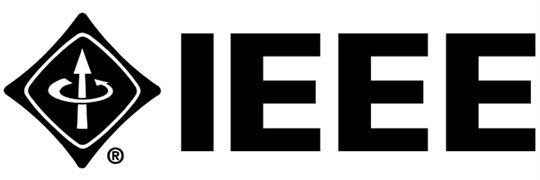The IEEE
Newsletter 
A Publication of the IEEE North Jersey Section
April 2002 Newsletter
North Jersey Section Activities
Congratulations To
Our New Senior Members
2002 IEEE NORTH JERSEY FELLOWS
IEEE International Conference on Communications 2002 Call For Participation
NJ EDS, C&S & LEOS Chapters: Approaching Fundamental Limits on Optical Signal Detection
NJ Signal
Processing Chapter: Bezout Space-Time Equalization for MIMO Channels
NJ EDS, C&S
Chapters: Applications For Ultra-Violet Imaging
NJ C&S, EDS
Chapters: The Circuit Paradigm in Nanoelectronics
Successful Spring
Paper Contest Concludes
NJ Consultants'
Network: Hot Topics in Contract Engineering
NJ PES/IAS: Circuit
Breaker Solutions
NJ PES/IAS: Electric Motor Seminar
April
2002
Volume 48, Number 10
Publication No: USPS 580-500
"The IEEE Newsletter" (North Jersey Section), is published monthly except June and July by The Institute of Electrical and Electronics Engineers, Inc. Headquarters: 3 Park Avenue, 17th Floor, New York, NY 10016-5997. $1.00 per member per year (included in annual dues) for each member of the North Jersey Section. Periodicals-class postage paid at New York, NY and at additional mailing offices. Postmaster send address changes to: "The IEEE Newsletter", 445 Hoes Lane, P.O. Box 1331, Piscataway, NJ 08855-1331. USPS 580-500 (ISSN 1076-3732).
NEWSLETTER STAFF
Editor:
Keith Saracinello
Business Manager: Theresa Saracinello
Deadline for receipt of material is the 1st of the month preceding the month of publication. All communications concerning editorial and business matters, including advertising, should be sent to the Business Manager via e-mail at mailto:k.saracinello@ieee.org or to The IEEE Newsletter, c/o Keith Saracinello, 25 Messenger Ln, Ringoes, NJ 08551, (732) 465-4067.
IEEE
NJ SECTION HOME PAGE http://www-ec.njit.edu/~ieeenj/
IEEE NJ SECTION NEWSLETTER HOME PAGE http://www-ec.njit.edu/~ieeenj/NEWSLETTER.html
REPORT
ADDRESS CHANGES TO:
IEEE Service Center, 445 Hoes Lane, P.O. Box 1331, Piscataway, NJ 08855-1331,
(732) 981-0060. It is not necessary to inform the North Jersey Section when you
change your mailing address. "The IEEE Newsletter" and other section
mailings use a list provided by IEEE's national headquarters.
SECTION
OFFICERS
Chairman: Dr. Nirwan Ansari, mailto:nirwan.ansari@njit.edu
(973) 596-3670
Vice-Chairman-1: Rodney Cole, mailto:rgcole@ieee.org
(973) 299-9022 Ext. 2257
Vice-Chairman-2: Milton Korn, mailto:miltonkorn@aol.com
(973) 365-2757
Treasurer: Durga Misra, mailto:dmisra@njit.edu
(973) 596-5739
Secretary: Wayne Owens, mailto:wowens@crestron.com
(201) 767-3400, ext. 226
Members-at-Large:
Vineeta Arora (arora@ieee.org)
Bhanu Chivakula (b.chivakula@computer.org)
Naz Simonelli (naz@sprynet.com)
Dr. Richard Snyder (r.snyder@ieee.org)
The North Jersey Section Executive Committee usually meets the first Wednesday (except holidays and December) of each month at 7:00 PM. Meetings are open to all members. For information on meeting agenda contact Secretary Wayne Owens at (201) 767-3400, ext. 226, or mailto:wowens@crestron.com
IEEE North Jersey Section Activities
April 2002
Apr. 3-"NJ Section Executive Committee Meeting" - 7:00 PM, ITT, 100 Kingsland Rd, Clifton, NJ. Wayne Owens at (201) 767-3400 ext. 226 or mailto:wowens@crestron.com.
Apr. 10-"Bezout Space-Time Equalization for MIMO Channels" - NJ Signal Processing Chapter, 5:00 PM (pizza and refreshments at 4:45 PM), NJIT, 202 ECE Center, Newark, NJ. Dr. Yun-Qing Shi (973) 596-3501, Dr. Alfredo Tan (201) 692-2324 tan@mailbox.fdu.edu or Dr. Hong Man (201) 216-5038 mailto:hman@stevens-tech.edu.
Apr. 10-"Applications For Ultra-Violet Imaging" - EDS/C&S Chapters, 7:00PM (buffet at 6:00PM), NJIT, 202 ECE Center, Newark, NJ. Dr. Richard Snyder (973) 492-1207, Dr. Durga Misra (973) 596-5739 (mailto:dmisra@njit.edu), or Dr. Edip Niver (973) 596-3542.
Apr. 11-"PACE Meeting - PACE 2002" - NJ Section PACE, 6:30-8:30 PM, Clifton Memorial Library, 292 Piaget Ave, Clifton, NJ. Richard F. Tax, (201) 664-6954, mailto:rtax@bellatlantic.net.
Apr. 17-"Approaching Fundamental Limits on Optical Signal Detection" - EDS/C&S and LEOS Chapters, 7:00PM (buffet at 6:00PM), NJIT, 202 ECE Center, Newark, NJ. Dr. Richard Snyder (973) 492-1207, Dr. Durga Misra (973) 596-5739 (mailto:dmisra@njit.edu), or Dr. Edip Niver (973) 596-3542.
Apr. 18-"The Circuit Paradigm in Nanoelectronics" - C&S/ EDS Chapters,7:00PM (buffet at 6:00PM), NJIT, 202 ECE Center, Newark, NJ. Dr. Richard Snyder (973) 492-1207, Dr. Durga Misra (973) 596-5739 (mailto:dmisra@njit.edu), or Dr. Edip Niver (973) 596-3542.
Apr. 18-"Pushing Broadband Enterprise Process Integration to the Edge" - Communications Society Chapter, 5:30PM, NJIT, 100 ECE Center, Newark, NJ. Dr. Nirwan Ansari (973) 596-3670 (mailto:nirwan.ansari@njit.edu), Amit Patel (mailto:a.j.patel@ieee.org), or check http://www-ec.njit.edu/~ieeenj for the latest updates.
Apr. 25-"Hot Topics in Contract Engineering" - NJ Consultants' Network, 7:30 PM, MCE/KDI Integrated Products, 60 S. Jefferson Road, Whippany, NJ. Robert Walker (973) 728-0344 or http://www.technologyontap.org/.
Apr. 26-"Electric Motor Seminar" - NJ IAS/PES Chapters, 9:00 AM to 3:00 PM, Longo Industries, Wharton, NJ. For additional information contact Ken Oexle at (973) 386-1156.
Apr. 26 & 27-"The 11th Annual Wireless and Optical Communications Conference", 8:00 AM Registration, 9:00 AM Opening Remarks, Marriott Hotel, Newark Airport, Newark, NJ. Details can be found on http://www.wocc.org/.
Apr. 28-"NJ Section Awards Reception" - 3:00 to 6:00 PM at the Birchwood Manor, 111 North Jefferson Rd, Whippany, NJ. Anne Giedlinski (973) 377-3175.
Apr. 28 - May 2-"IEEE International Conference on Communications 2002 (ICC2002)" - NJ Communications Chapter, New York Marriott Marquis, NY, NY. Visit http://www.icc2002.com/ for more information.
Upcoming
Meetings
May 1-"NJ Section Executive Committee Meeting" - 7:00 PM, ITT, 100 Kingsland Rd, Clifton, NJ. Wayne Owens at (201) 767-3400 ext. 226 or mailto:wowens@crestron.com.
May 4 & 5-"27th Annual Trenton Computer Festival", 10:00AM. See http://www.tcf-nj.org/ for details.
May 15-"Spring Packaging Symposium" - Lucent Technologies, Bell Laboratories, Murray Hill, NJ. See http://www.imaps.org/calendar.htm for details. Contact Bill Greig at mailto:wgreig@worldnet.att.net for more information.
May 16-"Circuit Breaker Solutions" - NJ IAS/PES Chapters, 7:00PM, Eaton/Cutler-Hammer Engineering Services, 690 Rahway Avenue, Union, NJ. Ron Quade at (908) 624-2365.
Members
and Non-Members Welcome
PLEASE POST
Congratulations To Our New Senior Members
August 2001
Alam, Muhammad A.
Stroustrup, Bjarne
September 2001
Bastani, Babak
Lau, Vincent K.N.
Lee, Inkyu
Qiu, Robert C.
Rubin, Eileen N.
November 2001
Coppola, Dr. Nancy W.
Hou, Edwin
Li, Qi
Mukherjee, Dr. Santosh
Peng, Shihsen
January 2002
Farmer, Kenneth R. II
Ghassemzadeh, Saeed S.
Jokubaitis, Vito P.
Tekinay, Sirin
Weiss, David M.
Karoly, Stanley
Add your name to the list of Senior
Members. All new Senior Members will receive
an engraved wood and bronze Senior Member plaque from the IEEE.
To get information and an
application to advance to Senior Member Grade, give your name and mailing
address to: Don Weinstein, Kulite
Semiconductor, One Willow Tree Road, Leonia, NJ 07605-2239, (201) 461-0900 Ext
234, mornings, FAX (201) 461-0990, email:
mailto:don@kulite.com.
2002 IEEE NORTH JERSEY FELLOWS
Mihai Banu
"For contributions to the art
of fully integrated continuous-time analog-filter design."
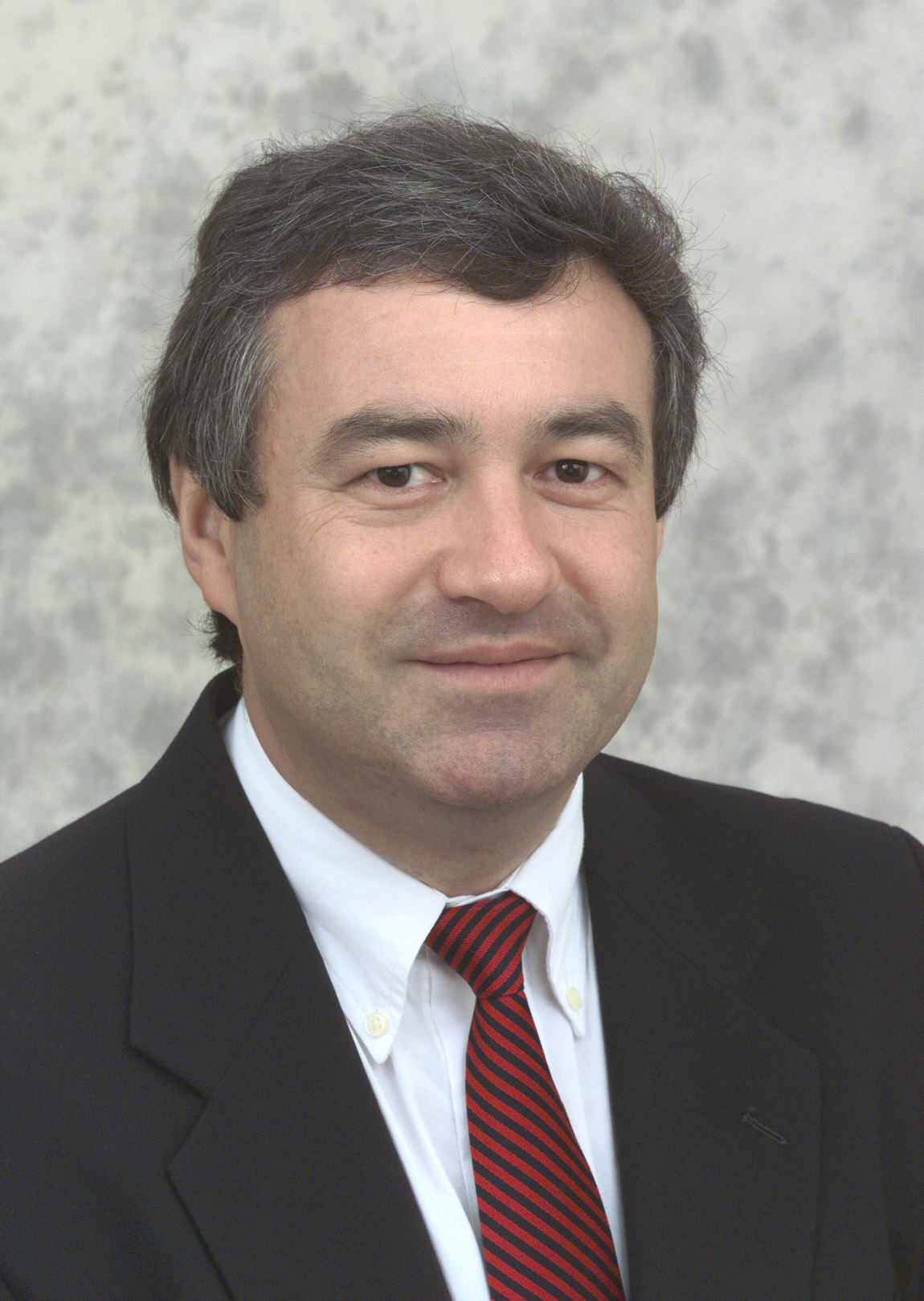
Mihai Banu was born in Romania in
1954 and received BS, MS, and PhD degrees in Electrical Engineering from
Columbia University, New York, NY in 1979, 1980, and 1984, respectively. During
the summers of 1980-1983 he worked at Bell Laboratories, Murray Hill, NJ, which
sponsored his doctoral studies, as a Research Associate and a Member of
Technical Staff. In 1984 he became a permanent
Member of Technical Staff in the same company and in 1996 he was appointed Head
of the Silicon Circuits Research department.
This organization was responsible for advanced work in circuit design
and Si technology/device enhancements, including developing a best in class
SiGe BiCMOS technology. Currently, Dr. Banu is the Director of Communications Circuits
Research Department at Agere Systems responsible for advancing the state-of-the-art
RF, analog and mixed-signal ICs, and wireless system architectures. Dr. Banu's personal technical interests are
in the fields of integrated circuit design, signal processing, and
systems. Among his accomplishments are
the invention of MOSFET-C continuous-time filters (nominated at an ISSCC'96
panel for a "Analog Top 10 Integrated Circuits of All Time" list),
contributions to integrated operational amplifier design (1998 Lucent
Technologies patent award), contributions to high-speed communication circuits
design, novel RF IC architectures for wireless, experimental work in
multi-gigahertz wide-band HBT circuits, and pioneering work in burst-mode clock
recovery circuits. Mihai received the
1987 IEEE Darlington award, holds several US and international patents, and has
published many technical papers. He has
been a visiting professor at Columbia University and has taught several short
courses in international conferences and workshops. He is a member of Eta Kappa Nu and Sigma Xi and an editor for
IEEE CAS Society publications.
_____________________________
Sankar Basu
"For contributions to theory
and application of multidimensional circuits, systems, and signal
processing."
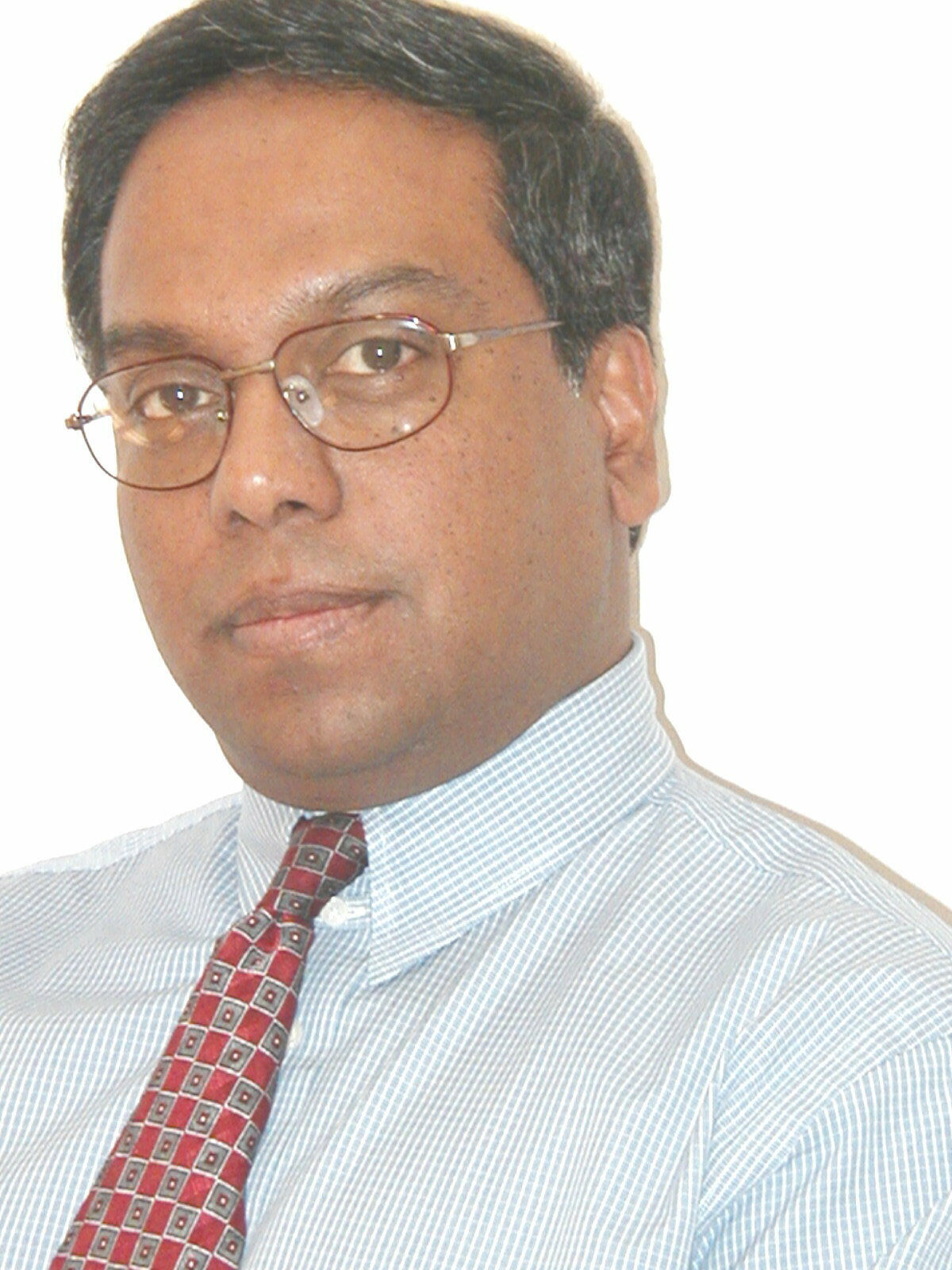
Sankar Basu was born in Calcutta,
India, and received a PhD degree from the University of Pittsburgh, USA. He has been an Alexander von Humboldt fellow
on extended visits to Ruhr University, Bochum, Germany over many years, was a
visiting scientist at the Laboratory for Information and Decision Systems (LIDS)
at MIT, and has been a faculty member of electrical engineering at the Stevens
Institute of Technology, where he taught and conducted funded research (US
Air-Force, NSF) in signals processing, and was the recipient of 1991 Jess Davis
memorial award for excellence in faculty research. For the last several years he has been with the IBM T. J. Watson Research Center, New York.
Dr. Basu's main research interests
had been in the mathematics of networks and systems theory with particular
emphasis on multidimensional systems. More recently, he has been involved with
statistical learning and multimedia signal processing. He has also published in digital filter
synthesis, image processing, nonlinear modeling techniques and wavelets and filter
banks – a topic in which he co-edited two special volumes. He was keynote
speaker at the First Int. Workshops on n-D systems (NDS) 1998 in Lagow, Poland
as well as at NDS2000 on Czocha Castle, Poland. He has organized and chaired sessions and has been panelist in
many IEEE conferences in the areas of multidimensional systems, statistical
learning theory and human computer interface.
He was the general chair of first IEEE International Conference on
Multimedia and Expo (ICME) 2000 held in New York City in August 2000, for which
he presently serves as the steering committee chair. He has served as an
Associate Editor for the IEEE Transactions on Circuits and Systems, and is at
present guest-editing a special issue of the IEEE Transactions on Circuits and
systems: part-I on multidimensional signals and systems, a special issue of the
IEEE Transactions on Multimedia on multimedia database, and a special issue of
the Journal of VLSI Signal Processing on Multimedia Communications - all scheduled
for the year 2002. He is on the
editorial board of the Journal of Applied Signal Processing of the European
Signal Processing Association, and the Journal of Multidimensional Systems and Signal
Processing published by the Kluwer Academic Publishers. He is an organizer and a principal lecturer
at the NATO Advanced Study Institute on "Statistical Learning and
Applications" to be held at the Katholieke University, Leuven, Belgium in
July 2002.
Dr. Basu has served as reviewer or
panelist on government funding agencies including National Science Foundation
and the Engineering and Physical Sciences Research Council of the United
Kingdom in the areas of Information Technology, Signal Processing, Data
Management etc.
Dr. Basu is a Fellow of the IEEE,
and members of SIAM, Eta Kappa Nu and Sigma
Xi.
_____________________________
Jelena Kovacevic
"For contributions to the
theory of signal representation."
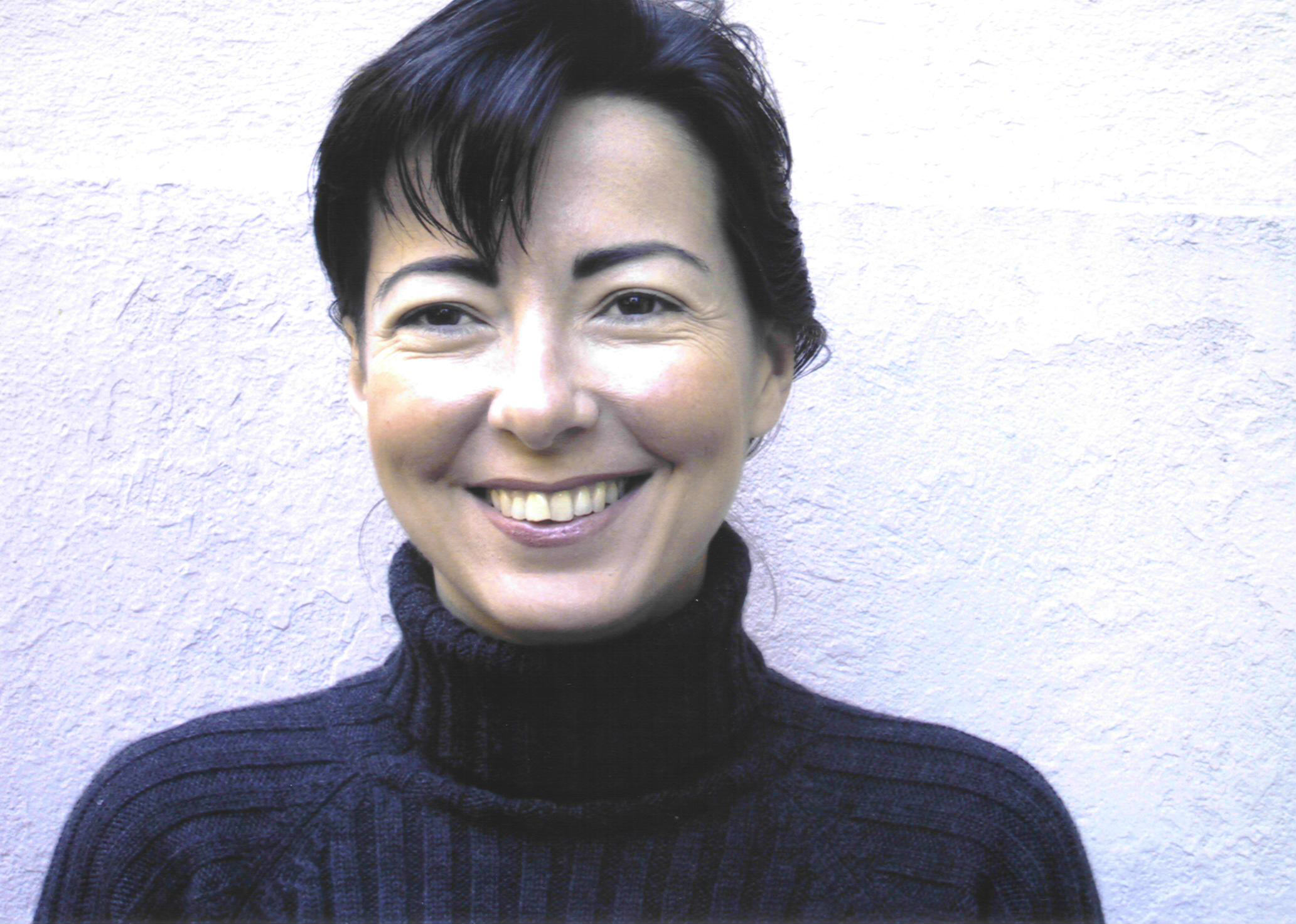
Jelena Kovacevic received the Dipl.
Electr. Eng. degree from the Electrical Engineering Department, University of
Belgrade, Yugoslavia, in 1986, and Master of Science and PhD degrees from
Columbia University, New York, NY, in 1988 and 1991, respectively.
From 1987 to 1991, she was a
Graduate Research Assistant at Columbia University. In the summer of 1985, she worked for Gaz de France, Paris, France,
during the summer of 1987, for INTELSAT, Washington, D.C., and in the summer of
1988, for Pacific Bell, San Ramon, CA.
In the fall of 1986, she was a Teaching Assistant at the University of
Belgrade. In November 1991, she joined
AT&T Bell Laboratories (now Lucent Technologies), Murray Hill, NJ, as a
Member of Technical Staff. She is also
an Adjunct Professor at Columbia University.
Her research interests include wavelets, multirate signal processing,
data compression and signal processing for communications. She is a coauthor on the paper for which
Aleksandra Mojsilovic received the Young Author Best Paper Award. She is a coauthor (with Martin Vetterli) of
the book "Wavelets and Subband Coding'' (Englewood Cliffs, NJ: Prentice
Hall, 1995). She is on the Editorial
Boards of the Journal of Applied and Computational Harmonic Analysis, Journal
of Fourier Analysis and Applications and the Signal Processing Magazine.
Dr. Kovacevic received the Belgrade
October Prize, highest Belgrade prize for student scientific achievements
awarded for the Engineering Diploma Thesis in October 1986 and the E.I. Jury
Award at Columbia University for outstanding achievement as a graduate student
in the areas of systems, communication or signal processing. She is the Fellow of the IEEE and the Editor-in-Chief
of the IEEE Transactions on Image Processing.
She served as an Associate Editor of the IEEE Transactions on Signal
Processing, as a Guest Co-Editor (with Ingrid Daubechies) in the Special Issue
on Wavelets in the Proceedings of the IEEE, and as a Guest Co-Editor (with
Martin Vetterli) in the Special Issue on Transform Coding of the Signal
Processing Magazine. She is a Member-at-Large of the IEEE Signal Processing
Society Board of Governors. She served
on the IMDSP Technical Committee of the IEEE Signal Processing Society and was
a General Co-Chair (with Jan Allebach) of the Ninth Workshop on Image and
Multidimensional Signal Processing.
_____________________________
James Johnston
"For contributions in
perceptual audio coding and its standardization."
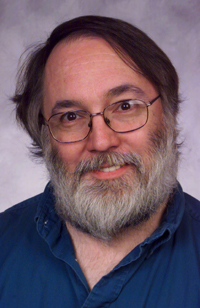
James D. Johnston received his BSEE
and MSEE from Carnegie-Mellon University in 1975 and 1976 respectively, with
side interests in mathematics, radio broadcasting and coherent image signal
processing.
Until recently, he has been
employed by AT&T Bell Laboratories, first in the Acoustics Research
Department under Dr. J. L. Flanagan, then in the Acoustic Research Department
under Dr. B. S. Atal, and then in the Signal Processing Research Department
working for Dr. N. S. Jayant. He is now
employed in the newly formed AT&T Labs - Research, now quartered at Florham
Park, NJ, reporting administratively to Dr. R. Cox of the Speech Processing
Software and Technology Research Department.
His original assignments involved
using analog signal processing to do speech coding (APCM, ADPCM, SBC) for
testing of algorithms, sampling rates, and quantizer resolutions. His first IEEE paper detailed the hardware construction
of an ADPCM implementation using analog multipliers and integrators to provide
both step-size and predictor "calculation", in a form that allowed
sampling rate and quantizer resolution changes.
Since then, he has worked in analog
signal processing, speech coding, voice privacy, quadrature mirror filter
design, and perceptual coding of both audio and images. During this work on perceptual audio coding,
he has been the primary investigator of the early PXFM audio coder which was
reported on at the ASSP Digital Audio Meeting in Mohonk, NY in 1986 and a
co-inventor and standards proponent of the ASPEC algorithm, the quality leader
in the MPEG-1 audio competition.
During this time, he also did an
investigation of coding of still-frame images using a forward-driven perceptual
model with Dr. R. J. Safranek, also of AT&T Bell Laboratories. This image coder, called PIC (for Perceptual
Image Coder), used very simple techniques to provide state of the art still-image
compression. Perceptual coding, as compared to source coding, pays primary
attention to the intended receiver or destination of the signal, rather than
the source or source model of the signal.
This destination is usually the human being. By eliminating
imperceptible information in the signal, compression rates that are
substantially better than the usual source coding rates are achieved, with substantially
more mean squared error, but better perceived quality than the source coder.
He was until recently the primary
researcher in perceptual audio coding and inventor of AT&T's contributions
to the MPEG_2 AAC audio coding algorithm. He also has represented AT&T in
the ANSI accredited group X3L3.1, and X3L3.1 in the ISO-MPEG-AUDIO (AAC) arena
in support of the AAC algorithm. In
1997, Mr. Johnston was elected a Fellow of the Audio Engineering Society for
his work on perceptual coding of audio.
Mr. Johnston became a Senior Member of the IEEE, and received an
AT&T Technology Medal and AT&T Standards Award in 1998.
Currently, Mr. Johnston is working
on Perceptual Soundfield Reconstruction (PSR), as well as on issues related to
audio coding and image and auditory perception. In February 2001, he received a New Jersey Inventor of the Year award
for his contributions to MP3 and audio coding in general.
Mr. Johnston has over 50
publications to his credit. A complete
list can be found at http://www.research.att.com/~jj/publications.html.
_____________________________
Ulrich L. Rohde
"For contributions to and
leadership in the development and industrial implementation of microwave
computer-aided design technology."
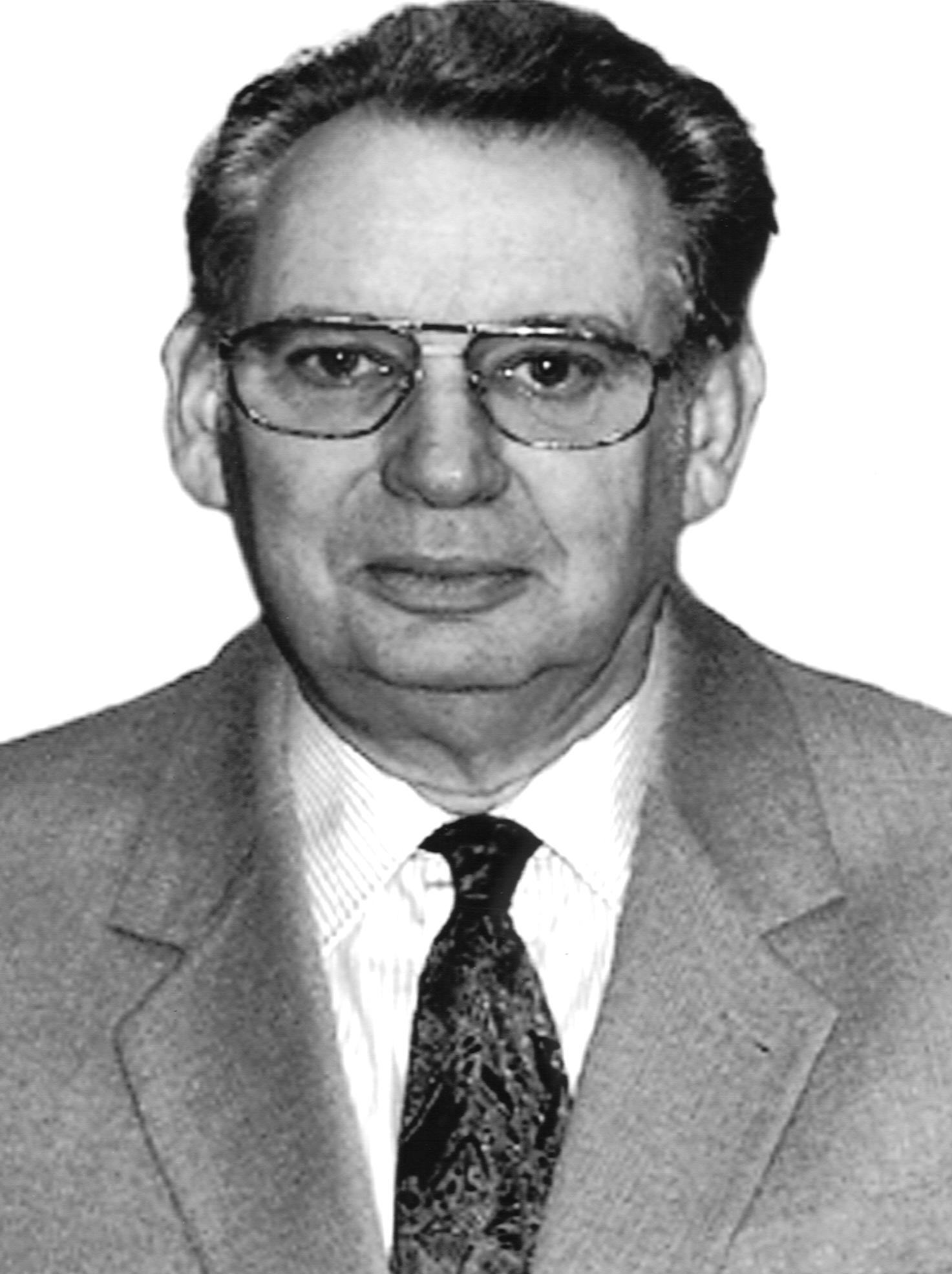
Ulrich Rohde studied electrical
engineering and radio communications at the universities of Munich and
Darmstadt, Germany. He holds a PhD in
electrical engineering (1978) and an ScD (hon., 1979) in radio communications.
He is President of Communications
Consulting Corporation; Executive Vice President of Ansoft Corporation for
Strategic Planning, Pittsburgh, Pennsylvania, after the company successfully
merged with Compact Software, Inc.; Chairman of Synergy Microwave Corp.,
Paterson, New Jersey; and a partner of Rohde & Schwarz, Munich, Germany, a
multinational company specializing in advanced test and radio communications
systems. Previously, he was the
President of Compact Software, Inc., Paterson, New Jersey; and Business Area
Director for Radio Systems of RCA, Government Systems Division, Camden, NJ,
responsible for implementing communications approaches for military secure and
adaptive communications.
In November 2001, Dr. Rohde was
appointed Visiting Professor of RF and Microwave Technologies at the University
of Cottbus, Germany. On October 1, 1998
he was appointed Honorary Visiting Professor of Electronic and Microwave
Engineering by the University of Bradford, England. On October 1, 1997 he was awarded the honorary degree of Doctor
Honoris Causa by the University of Grosswardein and on November 5, 1997 he was
also awarded the honorary degree of Doctor Honoris Causa from the Technical
University of Klausenburg. These
degrees were awarded based on major achievements in the area of microwave CAD
and development on synthesizer theory.
In April 1999 he was awarded a German patent on Method to Measure the
One and/or Multi-port Parameters of a Device Under Test (DUT) Using a Network
Analyzer, Patent No. 196 06 986. In
July 1997 he was awarded a U.S. patent on Phase-Locked Loop Circuits and
Voltage Controlled Oscillator Circuits; Patent No. 5,650,754. In May 1997 he was appointed Professor of
Electrical Engineering and Microwave Technology at the University of Oradea,
Romania.
From 1990 to 1992, Dr. Rohde was
appointed Visiting Research Professor at New Jersey Institute of Technology,
Department of Electrical Engineering, Newark, NJ. Dr. Rohde is also a member of the staff at George Washington University
(1982) and as an adjunct professor teaching in the Electrical Engineering and
Computer Sciences departments gave numerous lectures worldwide regarding
communications theory and digital frequency synthesizers. In addition, as a Professor of Electrical
Engineering at the University of Florida, Gainesville (1977), he had been
teaching radio communications course.
Dr. Rohde has published more than
60 scientific papers in professional journals, as well as six books: His latest
book, Communications Receivers, Third Edition, by McGraw-Hill, with co-author
Jerry Whitaker was published in December 2000; RF/Microwave Circuit Design for
Wireless Applications, by John Wiley & Sons, Inc., with co-author David P.
Newkirk, April 2000; Microwave and Wireless Synthesizers: Theory and Design,
John Wiley & Sons, August 1997; Communications Receivers, Second Edition,
McGraw-Hill, January 1997, with co-authors, Jerry Whitaker and T.T.N.
Bucher; Microwave Circuit Design Using
Linear and Nonlinear Techniques, with co-authors George Vendelin and Anthony M.
Pavio, by John Wiley & Sons, NY, January 1990; Communications Receivers:
Principles and Design, McGraw- Hill, 1987; Digital PLL Frequency Synthesizers:
Theory and Design, Prentice-Hall 1983; Transistoren bei hoechsten Frequenzen,
in German, 1965, (on microwave transistors).
Dr. Rohde is a member of the following: ETA KAPPA NU Honor Society, Executive Association of the Graduate
School of Business-Columbia University, New York, the Armed Forces
Communications & Electronics Association, fellow of the Radio Club of
America, and Chairman of the Electrical and Computer Engineering Advisory Board
at NJIT.
_____________________________
Krishnaswamy Nagaraj
"For contributions to the
design of CMOS data converters."
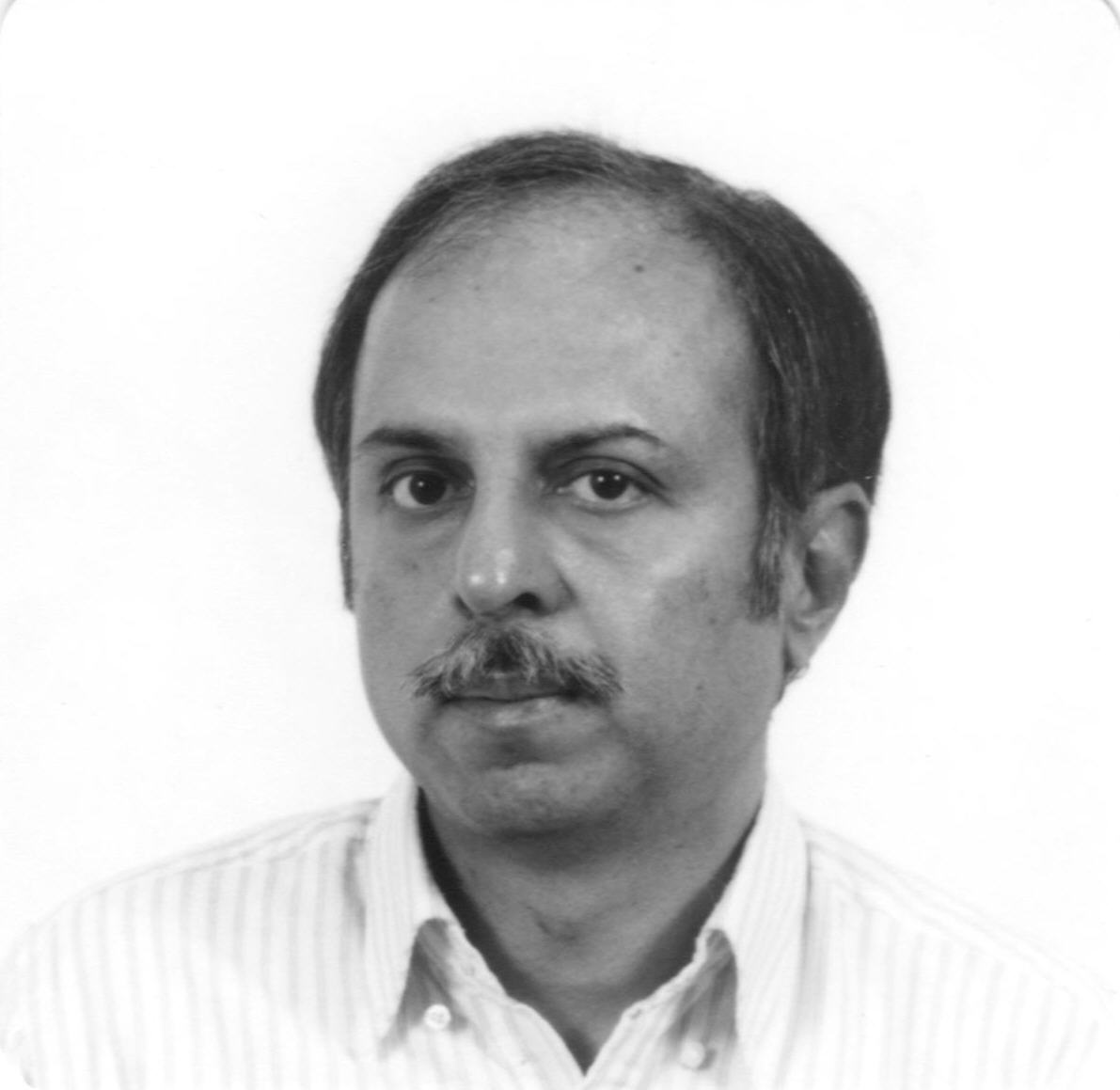
Krishnaswamy Nagaraj obtained his
BE degree in Electronics from Bangalore University in 1972 and his ME and PhD
degrees, both in Electrical Communication Engineering, from the Indian
Institute of Science, Bangalore in 1974 and 1983 respectively.
From 1974 to 1984, he was with the
R&D laboratories of the Indian Telephone Industries, Bangalore, where he
was engaged in the design of Telecommunication Systems and Integrated
Circuits. During 1985-86, he was with
the VLSI group at the University of Waterloo, Canada, engaged in research and
teaching in analog and digital circuits.
His research at Waterloo focused on techniques for overcoming non-ideal
effects in switched-capacitor circuits.
From 1986 to 1996, he was with the Bell Laboratories in Murray Hill, NJ,
and Allentown, PA, where he was engaged in the design of mixed-signal
integrated circuits for Telecommunications, Mass Storage and Digital Signal
Processing. He received the
Distinguished Member of Technical Staff Award from the Bell Laboratories in
1991.
Since 1996 he has been with Texas
Instruments at Warren, New Jersey, where he is presently a Distinguished Member
of Technical Staff. From 1996 to 2000,
he led the development of high speed CMOS data converters for Mass Storage,
Video and Broadband Communications. He
is presently leading the design of mixed-signal circuits for the Wireless
Infrastructure.
He was an Associate Editor of the
IEEE Transactions on Circuits and Systems, Part II, during 1993-95. He is presently an Associate Editor of the
IEEE Journal of Solid State Circuits and a member of the ISSCC Technical
Program Committee. He is also an
Adjunct Associate Professor of Electrical Engineering with the University of
Pennsylvania, Philadelphia.
_____________________________
Robert M. Goldberg
"For contributions to military
test and measurement equipment."
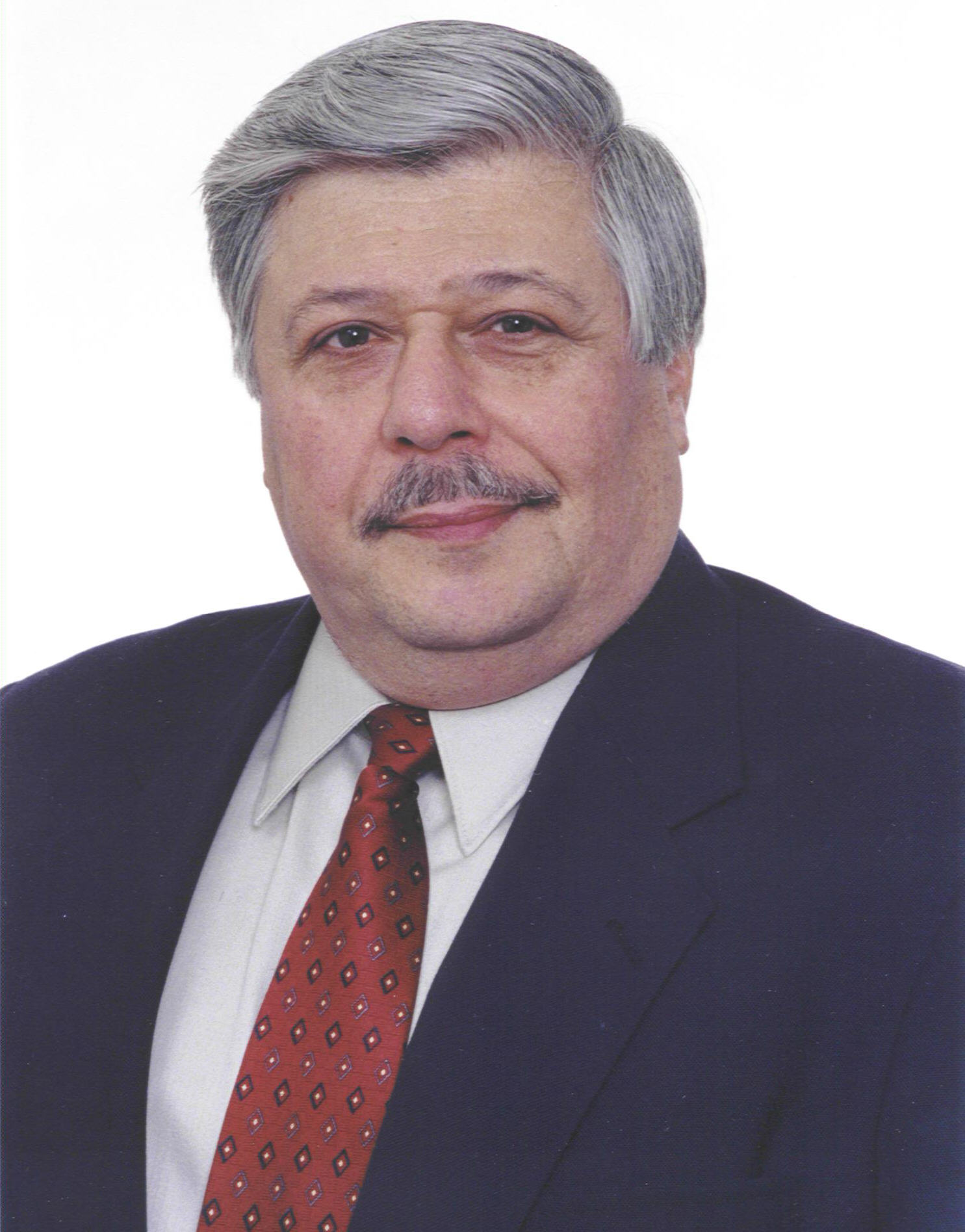
Robert Goldberg (Bob) joined the
IEEE as a Senior Member in 1982. He has
more than 35 years experience in the design and development of aerospace ATE,
support systems and electronic products.
He began his career in 1966 with
General Dynamics Electronics Division, Rochester, New York where he developed
the MD-522 Modem Test Set for the U.S. Army.
He was also a key member of the design team that developed the advanced
SCATE MK V automatic test system, the first test system to apply third
generation synthesized techniques for measurement of RF signal waveforms.
In 1971, Mr. Goldberg joined
Allied-Signal, Inc., Bendix Test System Division (now Honeywell), located in
Teterboro, NJ. For more than 20 years, he
managed a broad range of engineering activities related to electronic product
design, development and support and managed the division I R & D plan. Among his achievements at Allied-Signal was
pioneering the application of Expert Systems (Artificial Intelligence)
technology hardware to automatic test systems, which led to the development of
advanced Portable Maintenance Aids for the Air Force. He also led the development of the division's first
microprocessor-based test product with test applications ranging from submarine
electronic system support to electronic toys.
He assumed the position of Director
of Test Systems Engineering at Northrop Grumman Corporation, Rolling Meadows,
Illinois, in 1992. He was responsible for
test systems for support of the B-2 aircraft and the AN/ALQ-135 and AN/ALQ-162
RF/EW countermeasures systems. He was
also actively involved in the development of RF and microwave electronic
warfare instrumentation based on MMIC technology.
He is currently with ITT
Industries, Aerospace Communications Division, Clifton, NJ where he is
responsible for the program management of digital networking radios for sensor
communication applications.
Mr. Goldberg has been active with
the AdCom of the I&M Society since 1994. In this capacity he has served as
representative to the AUTOTESTCON Conference Board from 1994 through 2000 and
was Chairman of the board, 1999-2000.
He is currently serving the I&M Society as Membership Development
Chairman. In addition to these duties,
Mr. Goldberg is editor of the New Products section of the society's
Instrumentation & Measurement Magazine.
Mr. Goldberg received a BE
(Bachelor of Engineering) degree from Stevens Institute of Technology, Hoboken,
NJ in 1966 and an MBA degree in management in 1976 from Fairleigh Dickinson
University.
Mr. Goldberg has authored several
technical papers and he has chaired sessions of the I&M sponsored IMTC
conference and the AUTOTESTCON, which is co-sponsored by the I&M and AESS
societies.
_____________________________
Rick Schlichting
"For contributions to
fault-tolerant computing and distributed systems."
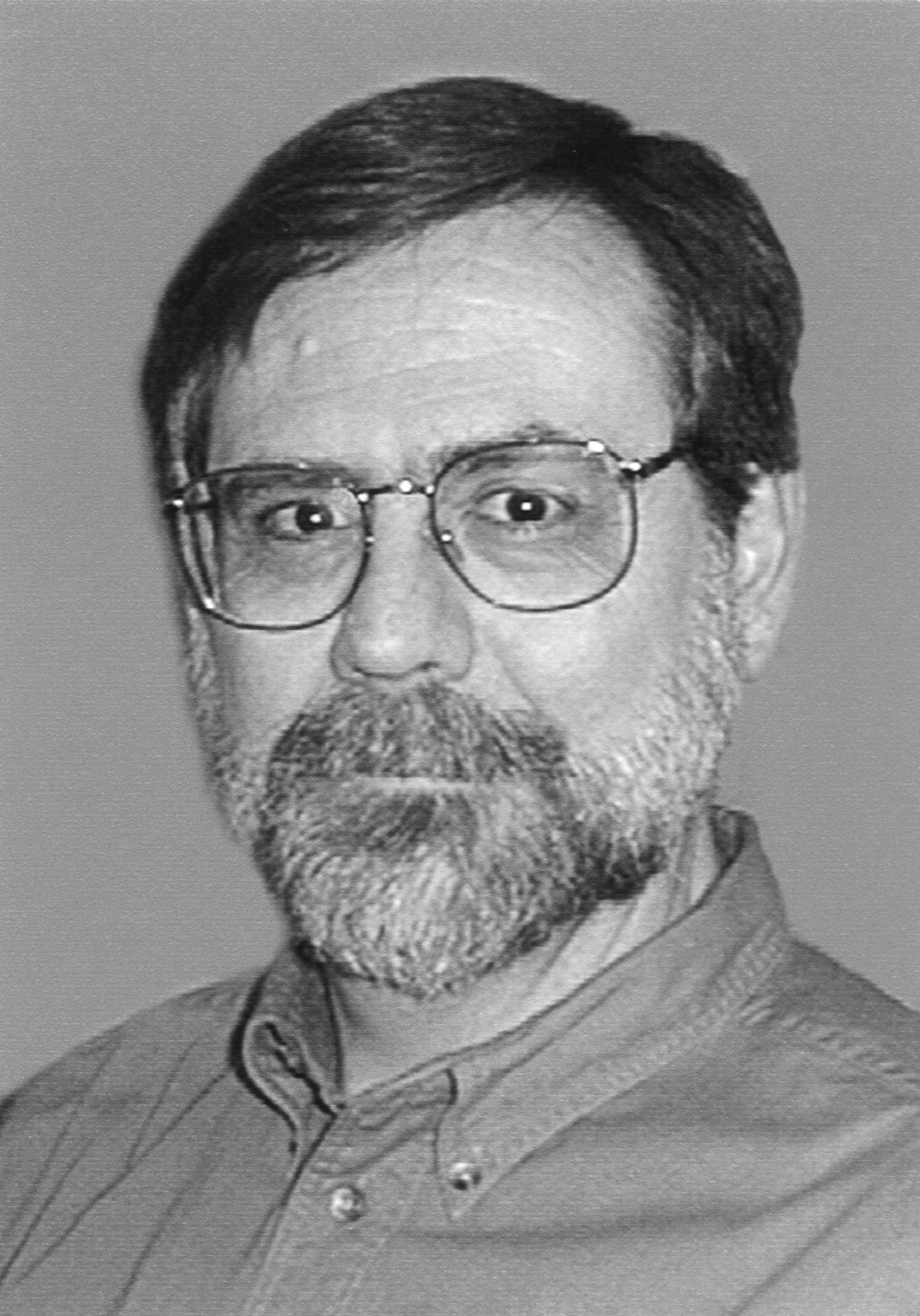
Rick Schlichting is currently head
of the Dependable Distributed Computing Department at AT&T Labs-Research in
Florham Park, NJ. He received the BA degree
in mathematics and history from the College of William and Mary, and the MS and
PhD degrees in computer science from Cornell University. He was on the faculty at the University of
Arizona from 1982-2000, and spent sabbaticals in Japan in 1990 at Tokyo
Institute of Technology and in 1996-97 at Hitachi Central Research Lab. Mr. Schlichting is an IEEE Fellow, an ACM Fellow,
and a member of IFIP Working Group 10.4 on Dependable Computing and Fault-Tolerance. He is on the editorial board of IEEE
Transactions on Parallel and Distributed Systems, and has been active in the
IEEE Computer Society Technical Committee on Fault-Tolerant Computing, serving
as chair from 1998-99. His research
interests include distributed systems, highly dependable computing, networks,
and exploitation of heterogeneity in scientific applications.
_____________________________
Juergen Schroeter
"For contributions to
text-to-speech synthesis technology."
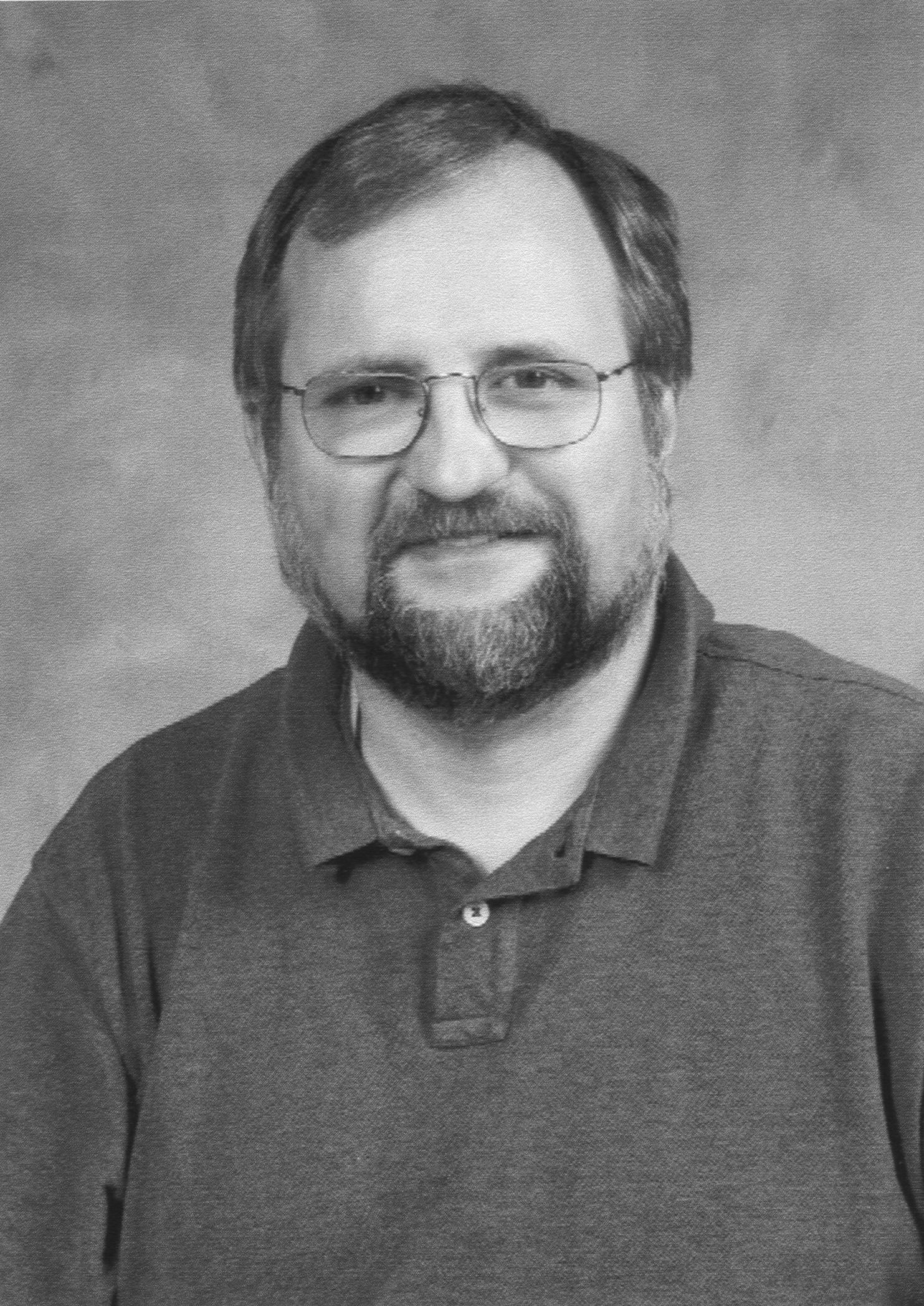
Chief Technology Officer Juergen
Schroeter is responsible for setting the technical direction for the TTS
business. He has shepherded the
transfer of technology from TTS Research into the Natural Voices Product and
continues to manage the TTS Engine and custom-voice development. Dr. Schroeter also continues to drive
world-class research in speech synthesis.
Dr. Schroeter has had a
distinguished career in the field of speech technology. From 1976 to 1985, he conducted research in
the areas of hearing and acoustic signal processing for the Institute for
Communication Acoustics, Ruhr-University Bochum, Germany. From 1985 to 1996, Dr. Schroeter was a
Member of Technical Staff at AT&T Bell Laboratories in Murray Hill, NJ,
where he worked on speech coding and speech synthesis methods that employ
computational models of the vocal tract and vocal chords. In 1996, he joined AT&T Labs Research.
Dr. Schroeter holds a PhD in
Electrical Engineering from Ruhr-University Bochum, Germany. In 2001, he received the AT&T Science
and Technology Medal. He is an IEEE
Fellow and a Fellow of the Acoustical Society of America. Dr. Schroeter currently serves as an
Associate Editor for the IEEE Transactions on Speech and Audio Processing, and
he is a former Associate Editor of the Journal of the Acoustical Society of
America.
Young-Kai
Chen
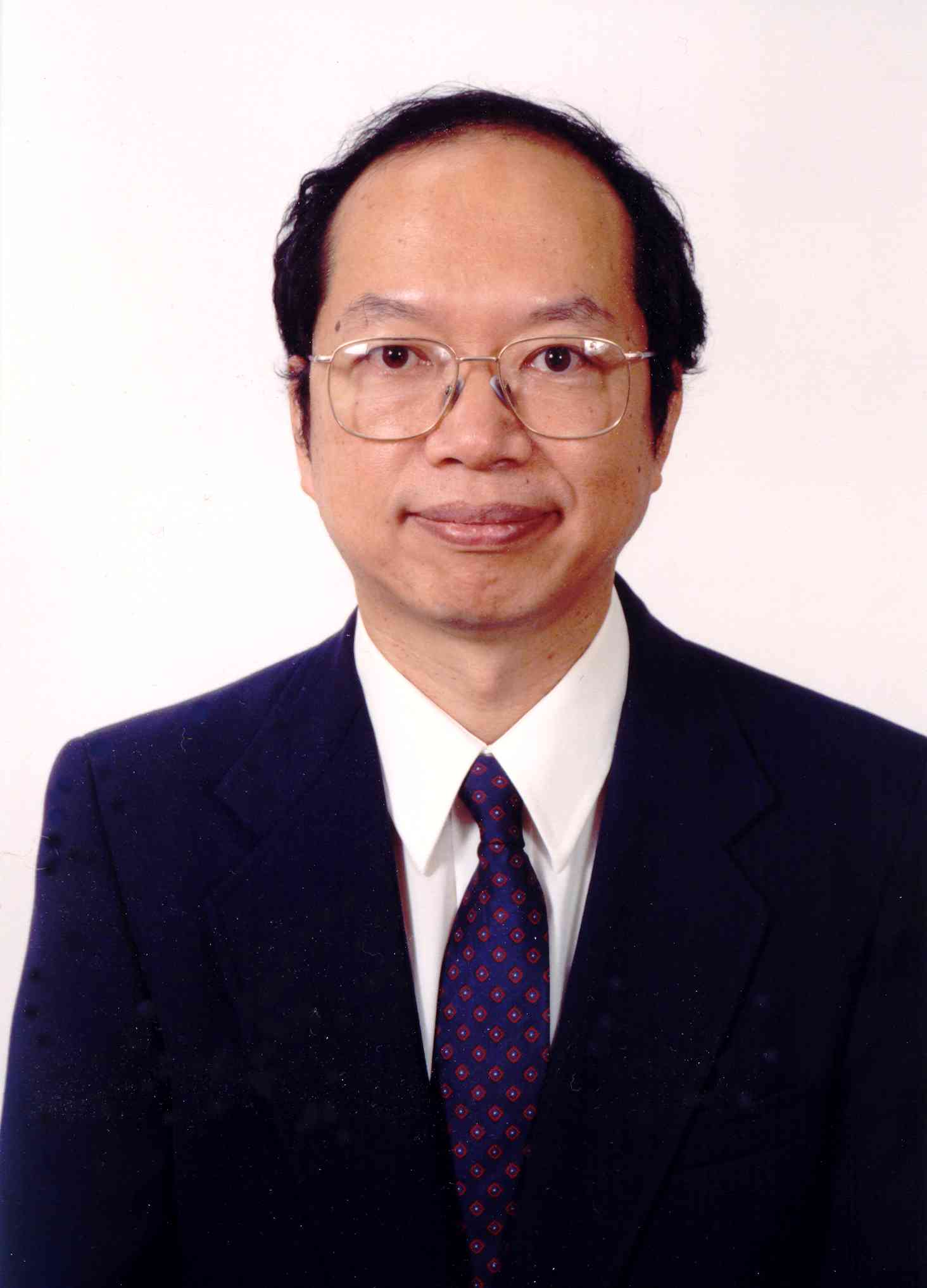
Young-Kai Chen obtained a Bachelors Degree from the National Chiao Tung University in Hsinchu, Taiwan in 1976, a Masters Degree from the Syracuse University in 1980, and a PhD degree from Cornell University in 1988, all in Electrical Engineering.
His first professional association was with the Electronics Laboratory of General Electric Company in 1980 in Syracuse, New York, as a Member of Technical Staff responsible for the design of silicon and GaAs microwave integrated circuits for phase array applications. After receiving his PhD degree in 1988, Dr. Chen has been a Member of Technical Staff with Bell Laboratories, Murray Hill, New Jersey. Since 1994, Dr. Chen has been the Director of High Speed Electronics Research Department exploring high speed electronics and optoelectronics for advanced optic fiber communication networks. He is also an Adjunct Associated Professor at Columbia University.
Dr. Chen has pioneered several high speed InP optoelectronics devices. He implemented the first meta-morphic InP HEMTs realized on GaAs substrate at Cornell in 1987. After joining Bell Laboratories, he demonstrated sub-picosecond InP HBT in 1988 with a cutoff frequency more than 165 GHz with superior non-equilibrium electronic transport properties and noise characteristics. In 1990, Dr. Chen invented the colliding pulse mode-locked (CPM) MQW semiconductor laser together with Dr. Ming Wu. Prior to the CPM concept, damages created by ion implantation was utilized on the laser facet to create saturatable absorber for the mode-lock operation. They utilized the separated forward- and reversed-biased MQW sections to create gain and saturatable absorbers in a integrated symmetric waveguide to produce mode locked operation. The CPM laser diodes were very stable and producing very short pulse of 600 fs with a transform-limited spectral purity at fast repetition rate up to 350 GHz. This CPM laser diode produced many new applications as high purity short pulse sources for high data rate optical communication and sources for coherent microwave generation. In 1994, Dr. Chen developed a robust DFB laser integrated with high performance MQW electro-absorption modulator using a selective-area growth technique for short pulse generation and low chirp data modulation. This integrated DFB-EAM device has been widely installed in the WDM optic fiber communication systems.
Dr. Chen is a Fellow of IEEE. He holds 10 patents and has contributed to more than 100 papers. He received the Young Scientist Award at International GaAs Symposium in 1993.
IEEE International Conference on Communications 2002 Call For Participation
We are pleased to announce that the IEEE ICC2002 Conference will be held in New York City from 28 April to 2 May 2002. Along with the IEEE Communications Society, which is celebrating its 50th Anniversary in 2002, our IEEE Section is proud to be a co-sponsor of the conference. In recognition of this golden anniversary, ICC2002 has scheduled a number of events, including a special retrospective 50th Anniversary Panel chaired by Bob Lucky. In addition, with your full or limited registration you will receive a DVD set that contains 50 years of papers that have been published in ComSoc magazines and journals and the last few years of conference proceedings!
The conference site is the New York Marriott Marquis, which is located in the heart of the Broadway Theater District. The conference will include Tutorials, Workshops, Plenary Sessions, Technical Sessions, plus Panels and Business Application Sessions.
Please visit http://www.icc2002.com for more information about IEEE ICC2002. We hope that you are able to join us in New York. The DVD set alone will be well worth the trip into the city!
PACE 2002
Your PROFESSIONAL ACTIVITIES COMMITTEE will hold its first meeting of 2002 on Thursday, April 11, at the Clifton Memorial Library.
Since this April meeting is our first in a long time, it will be a refresher to PACE activities and our membership's professional needs. This meeting provides IEEE Members with the opportunity to meet, address, discuss and perhaps improve the professional aspects of the engineering profession. Members should take advantage of the opportunity to have a place and time to meet with their associates to discuss their Profession.
While future Section PACE meeting subjects will be directed by the Section's membership, this meeting will be to identify some of those subjects. If you would like your professional interests identified, just attend, so we can place them on the agenda for future meetings. Remember: If you are a member of the North Jersey Section, you are also a member of PACE.
While checking with PACE Leaders I found high on the list of IEE-USA goals this year is "Employment Assistance and Career Development due to the worsening economy." Also on the list of priorities is the CARE project, S-PACS and M-PACS. More on these projects can be found at http://www.ieeeusa.org/.
We may also address other money making and employment issues.
Attend and pick up new ideas on issues and PACE projects of value to IEEE members & students in our Section.
Any thoughts, ideas, or suggestions you may have can be emailed to me at mailto:rtax@bellatlantic.net. Richard F. Tax, North Jersey PACE Chair
Welcome!
You
do not have to be a member of the IEEE to attend. Bring your friends.
Time: 6:30 to 8:30 PM, Thursday, April 11, 2002.
Place: Clifton Memorial Library, 292 Piaget Ave,
Clifton, NJ, 772-5500.
Information: Richard F. Tax, (201) 664-6954, rtax@bellatlantic.net.
Approaching Fundamental Limits on Optical Signal Detection
On
April 17, 2002, the IEEE NJ Section Electron Devices, and Circuits and Systems
Chapter, Laser and Electro Optics Chapter, together with the New Jersey
Institute of Technology will host a talk on "Approaching Fundamental Limits
on Optical Signal Detection." The
speaker will be Dr. Jindal, an EDS Distinguished Lecturer.
About the Talk
Starting
with the basic concepts of random noise, this talk will introduce the idea of
optical signal and its inherent corruption during detection and amplification. A framework for a general multiplication
noise theory will be outlined and its classical deterministic limit and the new
random limit will be developed. Application of these concepts to the design of
low noise photodetectors and circuits will be discussed. Attainment of near ideal amplification based
on the new random limit will be enumerated with examples.
About the Speaker
Dr. Jindal received a PhD degree in Electrical Engineering from the University of Minnesota in 1981. Upon graduation, he joined Bell Laboratories at Murray Hill, New Jersey. His experience at Bell Labs over these last 21 years has bridged both technical and administrative roles. On the technical side he has worked in all three areas of devices, circuits and systems. Highlights include fundamental studies of noise behavior of scaled sub-micrometer MOS devices and the design of high-performance Gigahertz Band analog MOS integrated circuits. He has also been involved in the study of the physics of multiplication phenomena and low noise signal amplification and detection in terms of novel devices and circuits including optoelectronic integration. On the administrative side, Dr. Jindal has developed and managed significant extramural funding from federal agencies and independent Lucent business units. He also chaired the effort in Lucent Technologies for developing and deploying a corporate-wide manufacturing test strategy in relation to contract manufacturing. On the academic side, he established and taught an RF IC design course at Rutgers University. He also participates in ABET activities as an evaluator for Electrical Engineering programs at institutions in the United States.
Dr. Jindal received the Distinguished Technical Staff Award from Bell Labs in 1989. In 1991, he was elected Fellow of the IEEE for his contributions to the field of sold-state device noise theory and practice. He was the Editor-in-Chief of the IEEE Transactions on Electron Devices from 1990 to 2000. In December 2000 he received the IEEE 3rd Millennium Medal. Currently he is publications chair for the IEEE Electron Devices Society and a member of the Electron Devices Society Advisory Committee and Executive committee.
All Welcome!
You do not have to be a member of the IEEE to attend.
Time:
7:00 PM, Wednesday, April 17, 2002.
Free buffet will be starting at 6:00 PM.
Place: New Jersey Institute of Technology (NJIT),
Room 202, ECE Center, Newark, NJ.
Directions are available at http://www.njit.edu/.
Information: Dr. Richard Snyder (973) 492-1207 (RS Microwave), Dr. Durga Misra (973) 596-5739 (mailto:dmisra@njit.edu) or Dr. Edip Niver (973) 596-3542 (NJIT).
Bezout Space-Time Equalization for
MIMO Channels
On Wednesday, April 10, 2002, the
IEEE North Jersey Section Signal Processing Society Chapter will host a
presentation on "Bezout Space-Time Equalization for MIMO
Channels." The speaker will be
Professor S. Y. Kung of Princeton University.
About the Talk
The Multi-Input-Multi-Output (MIMO)
channels will offer a very important diversity in 3G/4G wireless systems. Practical MIMO systems will need to address
the Inter-Symbol-Interference (ISI) and Inter-Channel-Interference (ICI)
problems. This talk will focus on the
perfect recoverability of spatial-temporal Bezout equalizers for
p-input-q-output (p < q) MIMO channels.
The talk will start with an overview of the Bezout system theory which
can serve as a powerful foundation for the Bezout equalization.
The STBC (Space-Time Block Coding)
framework has recently become a very popular and efficient diversity creation
technique. The Bezout system can work
well jointly with the STBC. The STBC
can be adopted to artificially construct a larger q' x p' (hopefully p' <
q') virtual transfer function without the channel information. We shall develop a Bezout equalizer and derive
necessary and sufficient conditions for perfect recoverability (PR) for the
STBC-induced virtual MIMO systems. For
a robust channel design, SNRs for the Bezout equalizer can be derived based on
the Bezout null space theory. The combined STBC and Bezout equalization
techniques offer a broader spectrum of system configurations for optimal design
tradeoff between the channel capacity and implementation complexities.
Bezout equalization, accompanied a
novel finite-alphabet-exclusiveness (FAE) property, also offers a very
effective approach to blind signal recovery for MIMO channels. The classical EM (expectation-maximization)
algorithm can be applied to the adaptation of the Bezout parameters (instead of
channel parameters as in most conventional blind approaches). Theoretical analysis on convergence property
of the Bezout EM technique will be discussed.
It also enjoys several advantages over the traditional approaches: (1)
it can individually recover the user's signal and is thus specially appealing
for MIMO, (2) it relaxes the burden of exact ISI length estimation, and (3) it can
bypass the costly Viterbi algorithm and achieve substantial computational
saving.
About the Speaker
Sun-Yuan Kung received his PhD
Degree in Electrical Engineering from Stanford University. In 1974, he was an Associate Engineer of
Amdahl Corporation, Sunnyvale, CA. From
1977 to 1987, he was a Professor of Electrical Engineering-Systems of the
University of Southern California. Since 1987, he has been a Professor of
Electrical Engineering at the Princeton University. Since 1990, he has served as an Editor-In-Chief of Journal of VLSI
Signal Processing Systems. He served as
a founding member and General Chairman of various international conferences,
including IEEE Workshops on VLSI Signal Processing in 1982 and 1986 (LA),
International Conference on Application Specific Array Processors in 1990
(Princeton) and 1991 (Barcelona), and IEEE Workshops on Neural Networks and
Signal Processing in 1991 (Princeton), 1992 (Copenhagen) and 1998 (Cambridge,
UK), the First IEEE Workshops on Multimedia Signal Processing in 1997 (Princeton),
and International Computer Symposium in 1998 (Taiwan).
Dr. Kung is a Fellow of IEEE. He was the recipient of the 1992 IEEE Signal
Processing Society's Technical Achievement Award for his contributions on "parallel
processing and neural network algorithms for signal processing." He was
appointed as an IEEE-SP Distinguished Lecturer in 1994. He received the 1996 IEEE Signal Processing
Society's Best Paper Award. He was a recipient
of the IEEE Third Millennium Medal in 2000.
He has authored more than 300 technical publications, including three
books "VLSI Array Processors", (Prentice Hall, 1988) (with Russian
and Chinese translations), "Digital Neural Networks", Prentice Hall,
1993, and "Principal Component Neural Networks", John Wiley,
1996. He has recently co-edited a book
on "Multimedia Image and Video Processing", CRC Press, 2001.
All Welcome!
You do not have to be an IEEE
member to attend. Pizza and light refreshments
will be served at 4:45 PM.
Time: 5:00 PM, Wednesday, April 10, 2002.
Place: New Jersey Institute of Technology (NJIT), Room 202, ECE Center,
Newark, NJ. Directions are available at http://www.njit.edu/.
Information: Dr. Yun-Qing Shi, (973) 596-3501, mailto:shi@njit.edu,
Dr. Alfredo Tan, (201) 692-2347, mailto:tan@mailbox.fdu.edu,
or Dr. Hong Man (201) 216-5038, hman@stevens-tech.edu.
Applications For Ultra-Violet Imaging
On
April 10, 2002, the IEEE NJ Section Electron Devices, and Circuits and Systems
Chapters together with the New Jersey Institute of Technology will host a talk
on "Applications For Ultra-Violet Imaging." The speaker will be Dr. Robin Dawson, an EDS Distinguished
Lecturer.
About the Talk
New applications for ultra-violet imaging are emerging in the fields of drug discovery and industrial inspection. High throughput is critical for these applications where millions of drug combinations are analyzed in secondary screenings or high rate inspection of small feature sizes over large areas is required. Sarnoff fabricates chips and cameras and is pushing this technology into these UV applications, taking advantage of Sarnoff's high speed imaging capabilities. This technology will be described and future directions presented.
Another
feature of Sarnoff's imaging devices is the use of extended dynamic range which
has been implemented in both CMOS and time delay integration (TDI) CCD
imagers. Results from these
implementations will be presented.
About the Speaker
Dr. Robin Dawson is an experienced program manager and IC designer. He has led programs and designed circuits in numerous technologies including Crystalline Silicon, High Temperature Polysilicon, Silicon on Sapphire, Silicon on Insulator, and Amorphous Silicon. He has particular expertise in the design of CCD Imagers with on board, correlated double sampling amplifiers, CMOS based imagers, active matrix circuitry for displays, and ESD protection circuitry. His present work is focused on the application of silicon devices to Ultra-Violet imaging.
Dr. Dawson received both PhD (1993) and MS Degrees (1990) in Electrical Engineering from The Pennsylvania State University, University Park, PA, and a BSE in Electrical Engineering and Computer Science from Princeton University, Princeton, New Jersey (1986). He is the Author or co-author of over 25 papers, holds two US patents with other patents pending, and is currently the Head of Solid State Imaging, Optoelectronics Business Unit, at Sarnoff Corporation.
All Welcome!
You do not have to be a member of the IEEE to attend.
Time:
7:00 PM, Wednesday, April 10, 2002.
Free buffet will be starting at 6:00 PM.
Place: New Jersey Institute of Technology (NJIT),
Room 202, ECE Center, Newark, NJ.
Directions are available at http://www.njit.edu/.
Information: Dr. Richard Snyder (973) 492-1207 (RS Microwave), Dr. Durga Misra (973) 596-5739 (mailto:dmisra@njit.edu) or Dr. Edip Niver (973) 596-3542 (NJIT).
NJ
Communications and Computer Societies:
Pushing Broadband Enterprise
Process Integration to the Edge
On
Thursday, April 18, 2002, IEEE North Jersey Section Communications Society and
Computer Society, along with the NJIT Electrical and Computer Engineering
Department will sponsor a talk entitled "Pushing Broadband Enterprise
Process Integration to the Edge" by Suhas Joshi.
About the Talk
Broadband service providers such as Broadband Cable, DSL and Internet access providers operate in a fast moving and competitive environment. The success of a service provider clearly depends upon the effectiveness of its service management and service delivery processes. In order to be competitive and successful, the service management architecture has to be dynamic and integrated with customer, trading partners and the service delivery processes on a real-time basis.
The key components of dynamic service management include a service creation environment, self-help quote and order entry, trading partner interaction, service provisioning and service activation and billing. The paper examines the use of UDDI, SOAP and XML technologies for effectively integrating the key enterprise processes for dynamic service management.
Service
delivery involves fulfilling the user request for a certain service. In this paper we describe a "next
generation" service delivery architecture consisting of a
"Softswitch" providing access to services such as unified messaging. The paper shows how such a service delivery
architecture can be integrated with the dynamic service management architecture
presented earlier.
About the Speaker
Suhas Joshi is a Principal at BusinessEdge Solutions, responsible for Technical Management of Enterprise Process Integration (EPI) Solutions. He has extensive experience in developing systems integration and software solutions for the Telecommunication industry. Suhas has worked on Network Equipment design, Network Equipment Management protocols, Internet Applications and Network Services Integration. Suhas received his Master of Engineering (Electrical Engineering) degree from Cornell University. He is a member of IEEE. He has written and co-authored several papers in the areas of software reliability and software tools for the Telecommunication industry.
All Welcome!
You do not have to be a member of the IEEE to attend. Bring your friends.
Time: 5:30 PM, Thursday, April 18, 2002.
Place: New Jersey Institute of Technology (NJIT),
Room 100, ECE Center, Newark, NJ.
Directions are available at http://www.njit.edu/.
Information: Dr. Nirwan Ansari (973) 596-3670 (mailto:nirwan.ansari@njit.edu), Amit Patel (mailto:a.j.patel@ieee.org), or check http://www-ec.njit.edu/~ieeenj for the latest updates.
The Circuit Paradigm in
Nanoelectronics
On
April 18, 2002, the IEEE NJ Section Circuits and Systems, Electron Devices Chapters together with the New Jersey
Institute of Technology will host a talk on "The Circuit Paradigm in
Nanoelectronics." The speaker will
be Professor Arpad I. Csurgay, a CAS Distinguished Lecturer.
About the Talk
There are two different classes of technological approaches in nanoelectronics. One is based on deep submicron solid state techniques, such as molecular beam epitaxy (MBE), electron beam lithography (EBL), etc., the other builds its structures by chemical synthesis of atoms and molecules. Molecular nanotechnologies are evolving into 'molecular engineering', in our case into 'molecular nano-electronics.
Nanoelectronic discrete devices, such as resonant tunneling diodes and transistors, single-electron transistors, bistable quantum-cells, quantum interference devices, molecular wires and switches, etc., have been proposed and built. Technology and physics of the devices are reasonably well understood, but there exists a gap between device physics and nanoelectronic systems integration. Manufacturing technologies are available today far beyond the feature sizes of microelectronics. However, in nanoelectronics, i.e. in the meso-scale range (10-100 nanometers), physics is not scale-invariant any more, and new exotic quantum effects emerge. Below feature sizes of 5 nanometers, especially in the range of the size of atoms and molecules (around 0.1 to 2 nanometer), quantum behavior holds dominant sway.
The circuit paradigm has a potential to bridge the gap between device physics and integrated system design. Our course is devoted to the circuit paradigm in nanoelectronics, with special emphasis on the modeling and simulation of integrated nanosystems composed of metal-connected ('wired') and/or field-coupled (Coulomb- or magnetically coupled) nanoscale devices.
To build a processor on a chip, a large number of discrete devices should be coupled. If each device has metal contacts, i.e. they are all embedded into 'heat baths', then conventional interconnection with wires is possible, and Kirchoff laws prevail. But in most cases the unavoidable electromagnetic fields generated by the wires destroy quantum-device performance, and the power dissipation becomes intolerable.
Proposals that overcome this difficulty, published so far, prefer next-neighbor-coupling instead of wiring. It will be shown that if quantum coherence is only local, i.e. it is restricted to the internal dynamics of the components, then circuit models can be introduced, and simulation can be performed using generalized Kirchoff-type circuit equations.
Introducing finite-state orthonormal representation of the quantum-wave functions describing the state of the devices, and constitutive relations of the devices, and that of the couplings can be derived. Under very general conditions, these relations take the form of nonlinear dynamic circuit equations.
Physical realizability of system-functions, such as binary logic, write-and-read memory, sensors, and signal generators have been studied. It has been shown that binary logic can be realized by locally active, lossless nonlinear devices, but in order to realize write and read memory cells and signal generators, device-activity is a necessary condition. Active devices can be realized by DC bias, periodical pumping, or by adiabatic clock-control of the device parameters.
In
the next decade a host of new nano-devices will emerge, and physics seems to
regain its traditional role in electronic engineering. Questions concerning physical realizability
on the device, circuit and system levels will be important. Circuit theory has
always been bridging physics with system design. In nanoelectronics the circuit theory paradigm can serve as a
bridge between device physics and systems integration.
About the Speaker
Arpad I. Csurgay is a Professor at the University of Notre Dame Center for Nano Science and Technology and an IEEE Circuits and Systems Society Distinguished Lecturer.
All Welcome!
You do not have to be a member of the IEEE to attend.
Time:
7:00 PM, Thursday, April 18, 2002. Free
buffet will be starting at 6:00 PM.
Place: New Jersey Institute of Technology (NJIT),
Room 202, ECE Center, Newark, NJ.
Directions are available at http://www.njit.edu/.
Information: Dr. Richard Snyder (973) 492-1207 (RS Microwave), Dr. Durga Misra (973) 596-5739 (mailto:dmisra@njit.edu) or Dr. Edip Niver (973) 596-3542 (NJIT).
Successful
Spring Paper Contest Concludes
On Thursday, February 28th, 2002, the Annual Student Paper Presentation Contest was held at NJIT in Newark, NJ. It was a very well attended event with close to forty audience members. It was a marathon effort with fifteen graduate and undergraduate presenters giving individual talks. Almost all presenters gave professionally polished and technically sharp talks that sparked engaging questions from the judges. This year marked the highest number of entrants representing three different universities (NJIT, FDU, Montclair State).
As
is done annually, below are the abstracts of all the winners for this year. The undergraduate category had a surprise by
having two winners tie for first place.
All winners were awarded certificates and cash prizes. This information
can also be found on the SAC website at: http://ewh.ieee.org/r1/
north_jersey/sac/ieee.html
_____________________________
Tiak Kundu - 1st
place graduate
New
Jersey Institute of Technology
"Enhanced
Electron Transit Time In Pinned-Buried Photodetectors"
Electron
transport in a multi-implant pinned - buried photodetector under uniform
illumination condition is investigated.
A charge transfer model that combines both diffusion equation and
continuity equations was developed to estimate the charge read out time in the
photodetector used in ultra high frame rate image sensors. A maximum effective diffusion length was
assigned to each implanted region after taking in to account the fringing field
drift due to multiple implants. It was
assumed that the charge on each section is directly proportional to its area
under uniform illumination. The total charge
as a function of time is obtained as a superposition of charge contribution of
all implanted regions. Different
electron mobility values for each doping concentration were considered to
estimate the total charge readout time.
The model showed excellent match with the experimental results.
_____________________________
Anamika Patel - 2nd
place graduate
New
Jersey Institute of Technology
"Tantalum
Coatings On Gun Steel"
Coating
of a steel surface with tantalum can protect it from erosive and corrosive
wear. Such coatings can be deposited by
the sputtering process, in which ions of noble gas, such as argon, transfer
atoms from the target (tantalum) to a steel substrate in a vacuum. The equipment for this process has been
built in the Ion Beam and Thin Film Laboratory under the Sustainable Green
Manufacturing program at NJIT. The US
Army is interested in replacing chromium coatings inside gun barrels with
tantalum, which better protects the gun barrel surface. Processing and recycling of chromium
generates hazardous waste and the success of the new coating technology will
have a positive environmental impact.
Tantalum coatings with excellent properties, which have been obtained at
NJIT, are now tested at US Army research laboratories, which collaborate on
this research. This work is a part of a
doctoral thesis with the ECE department at NJIT.
_____________________________
Congzhe Zhang - 3rd
place graduate
New
Jersey Institute of Technology
"Three
Dimensional Surface Warping For Plastic Surgery Planning"
This
paper proposes to use free-form deformation for pre-surgical planning in
plastic surgery. 3D data is obtained
with a stereoscopic method. A direct
manipulation method is applied in order that surgeons are not required to
consider the underlying B-spline control lattice during their use. The proposed method sets several parameters
that can be altered to meet different requirements. One displacement vector can be adjusted to different direction
and length. Lattice resolution is set
to change the surgery surface area. To
achieve a desired 3D surface warping result, an arbitrary number of
displacement vectors, each with different direction and length, can be
applied. The proposed method provides
flexibility and real-time effect. The
volume change is specified during the warping process. The work also proposes one simplified
skin-muscle model and simulates the implanted material needed to achieve the
result. A graphical user interface is
developed and the nose augmentation as an example application is presented and
discussed.
_____________________________
Ledion Bitincka - 1st
place undergrad co-winner
Montclair
State University,
"Boolean
Function Simplification On A Palm-Based Environment"
This
project studies the problem of minimizing Boolean expressions and provides an
optimal implementation to this problem.
There are many benefits to simplifying the Boolean function before it is
implemented in hardware. A reduced
number of gates considerably decreases the cost of the hardware, reduces the
heat generated by the chip and, most importantly, increases speed. The algorithm follows the Karnaugh map
looping approach. For the implementation
C++ coding was used on the CodeWarrior for Palm Operating System
environment. The object-oriented
approach was used to make the overall implementation efficient. This application brings together the power
of the algorithm and the convenience of the Palm Handheld device for students,
academics and digital circuit designers.
Two examples are presented to illustrate the efficiency of the proposed
algorithm.
_____________________________
Vinit Bhansali - 1st
place undergrad co-winner
New
Jersey Institute of Technology
"GUI
Design Advances"
Though
not an extensively public topic, proper GUI Design is an integral part of
software development in today's world.
Starting from a brief history of the GUI in software applications, the
presentation will continue on towards focusing on the GUIs of major OS's
(current and future). The presentation
also covers the new interfaces being used in handheld computers, home
appliances and public display systems.
While equal importance is given to PC and appliance interfaces, a
distinct contrast is still maintained on the roles the GUI plays in each
setting. Descriptive references to
good/bad GUI design elements and GUI enhancements in existing systems are
explained with photographic proof/examples.
This presentation concludes with thoughts about GUI design having just
blossomed or whether the evil standardizing word is already killing innovation.
_____________________________
Matthew Sked - 2nd
place undergrad
Fairleigh
Dickinson University
"Voice
Recognizable FM Receiver"
Neural
Networks have been developed for over fifty years; however, it has made its
greatest strides over the past fifteen years with the wider use of computers. Speech recognition technology specifically
has benefited greatly from this. As the
speed of computers has increased so has the ability of speech recognition to
process the voice signals in a reasonable amount of time. This technology had led to many modern day
innovations such as security, and voice control. In my project I will use neural network technology to create a
voice controlled FM radio. I will train
a voice recognition chip to work with a FM receiver. The user will be able to turn the radio on and off, increase and
decrease its volume, and tune stations by means of voice commands. Ultimately this technology can be used in a
car where the driver will not have to take his hands off the wheel to adjust
the radio.
_____________________________
Tiffany Sims - 3rd
place undergrad
New
Jersey Institute of Technology
"Short
Term Adaptation of Disparity Vergence: A Suppressive Stimulus Study"
Everyday, adaptation occurs as our nervous systems examines and fine-tunes the correlation between sensory input and motor output. An example of a system that displays adaptation is disparity vergence, which is the inward or outward turning of the eyes. Vergence eye movements exhibit two key behaviors, high velocities and accuracy. The Dual Mode Theory depicts these behaviors by modeling the system using two control strategies. The fusion sustaining component accounts for the high speeds and performs coarse adjustments through open-loop control. The fusion sustaining component accounts for the high accuracy using fine tuning through a feedback control mechanism. This study analyzed adaptive effects of the vergence system using an infrared limbus tracking device to record eye movements. Specifically this study investigated how small steps of 1 degree influence 4, and 8 degree steps. Adaptation was observed in the two subjects studied.
Hot Topics in Contract Engineering
On
Thursday evening, April 25th, the IEEE Consultants' Network of Northern NJ will
hold its monthly general meeting, featuring a presentation by Michael Wallman
of ESG entitled "Hot Topics in Contract Engineering."
About the Meeting
Many corporations frequently turn to companies specializing in contract engineering services to fulfill their requirements for temporary or highly specialized technical talent. This puts those in the contract placement business in a unique position to assess trends in particular technical specialties or geographic regions. Michael Wallman of ESG in Parsippany, NJ will share his insights during his presentation. Some of the topics Mr. Wallman plans on addressing include:
*
Skills in demand now and over upcoming years
*
Hot industries
*
Networking/ Selling Your Services
*
Salary review and Forecast
About the Speaker
Michael
Wallman is the Vice President of ESG and has over 20 years experience in the
technical placement industry. ESG, a
division of Modis (NYSE symbol MPS), specializes in the recruitment, selection
and placement of engineers for a wide variety of contract or consulting
positions both locally and nationally.
With a network of over 20 offices throughout the country and divisional
sales in excess of $150 million, ESG serves a diverse group of industries
including Aerospace, Pharmaceutical, Medical, Telecommunications, Electronics
and Chemical/Petrochemical plus many more.
Consultants'
Network Member Presentations
During
the second half of the meeting, the following member of the IEEE Consultants'
Network of Northern NJ will be presenting a brief overview of his consulting
practice:
Chris
Mesibov has over 15 years experience as an electronics designer. His capabilities include: RF/microwave,
digital design, software for embedded systems, and ATE programming. Mr. Mesibov brings synergy, thoroughness,
and creative solutions to today's telecommunications and military engineering development
needs.
About the
Consultants' Network
The IEEE Consultants' Network of Northern NJ was founded in 1992 to encourage and promote the use of independent technical consultants by business and industry.
All Welcome!
You do not have to be a member of the IEEE or of the Consultants' Network to attend. Networking after the meeting is encouraged. There is no charge for admission.
Time: 7:30 PM, Thursday, April 25, 2002.
Place: MCE/KDI Integrated Products, 60 S. Jefferson
Road, Whippany, NJ. (Use the rear entrance)
Information: For directions and up-to-date meeting status, call Robert Walker (973) 728-0344 or visit our website at www.TechnologyOnTap.org.
Circuit Breaker Solutions
On
May 16, 2002, the IEEE North Jersey Chapters of IAS/PES will feature a talk on
the subject of "Replacement, Recondition, Retrofit and Retrofill of Industrial
Grade Low and Medium Voltage Circuit Breakers." The Speaker will be Ronald W. Quade, P.E. of Eaton/Cutler-Hammer
Engineering Services and Systems.
About the Talk
With the installed base of industrial electrical equipment aging, a common problem facing operators is the reliable operation of their plants. Replacing switchgear with new is often prohibitive both in cost and the outage time required for replacement. Further, matching new switchgear to existing footprints, conduits, etc. requires custom switchgear and extra labor at significant additional cost.
Alternatively,
there are many maintenance and upgrade solutions available. Solutions for
circuit breakers include replacement, reconditioning, retrofit and cell
retrofill. Replacement consists of a
new circuit breaker that fits in the existing switchgear cell. Reconditioning consists of tearing down the
circuit breaker to its smallest component level and rebuilding it to it's
original manufacturers specifications.
Retrofit consists of upgrading the circuit breaker's protective trip
system. Retrofill consists of replacing
the switchgear cell to accept a new circuit breaker.
About the Speaker
Mr. Quade received his Masters Degree in Power Engineering from NJIT. He has held several positions with GPU Energy and now works as a Senior Sales Engineer with Eaton/Cutler-Hammer Engineering Services and Systems.
Time: 7:00 PM, Thursday, May 16, 2002.
Place: Eaton/Cutler-Hammer Engineering Services,
690 Rahway Avenue, Union, NJ 07083.
Directions: Route 82 Morris Avenue from either Springfield or Union to
Rahway Ave, or Route 22 east to Springfield Road North (Union) to Rahway Ave.
Information: Ron Quade (908) 624-2365.
NJ PES/IAS: Electric Motor Seminar
The PES and IAS Chapters will present a technical seminar on the fundamentals of electric motors. The daytime seminar (9:00 AM - 3:00PM) will be held at Longo Industries in Wharton, NJ on Friday April 26, 2002.
About
the Seminar
The seminar will cover the following topics:
*
Motor Design and Construction
* Selection and Application of Motors
* Torque Requirements
* Compatibility with Adjustable Speed Drives
* Motor Installation Considerations
* Predictive and Preventive Maintenance
* Tour of Longo Motor Service Center
Mr. Thomas Bishop, Vice President-Engineering Longo Industries will lead the seminar and be assisted by other members of his staff. Mr. Bishop is a licensed Professional Engineer and has over thirty years of experience in motor design, application and equipment service. He is Chairman of the EASA Technical Services Committee, a principal member of National Fire Protection Association Electrical Equipment Maintenance Committee (NFPA70B), and a member of the working group developing IEEE 1415 Guide for Induction Machinery Maintenance and Failure analysis.
The registration fee for this seminar prior to April 15th will be $175 (non-IEEE members), $125 (IEEE Members), and $50 (students with valid ID). Registrations after April 15th must include an additional late fee of $25. The seminar fee includes lunch, refreshments and handouts. Non-members joining IEEE within 30 days of the seminar will be rebated 50% of the IEEE registration charge.
Time:
9:00 AM to 3:00 PM, Friday, April 26, 2002.
Place: Longo Industries, One Harry Shupe Boulevard, Wharton, NJ
(973-537-0400). Directions: Route 80 to Route 15 South. Turn right
at first traffic light on to Dewey Avenue. Proceed to next traffic light
and turn left on to Main Street. Harry Shupe Boulevard is on the left
(0.3 mile, just beyond where Main St makes a sharp turn). Longo
Industries is at the end of the road.
Information: R. Vittal Rebbapragada, PE, (609) 720-3209 or r.rebbapragada@ieee.org.
_______________________________________________________________________________________________
Registration: Electric Motor Seminar, 4/26/2002
Register
via US mail to:
K. Oexle
11 Deerfield Rd
Whippany, NJ 07981
Name_____________________________________________________________
Address__________________________________________________________
Phone_________________________Email______________________________
IEEE #_________________ Student @__________________ Non IEEE_____
Payment Enclosed $_______________ Add $25 late registration after April
15th
Make Check payable to North Jersey Section IEEE.
North Jersey Section
April 28, 2002
Birchwood Manor, Whippany NJ
A time to relax, unwind and enjoy
--
A time to pay tribute to our new Fellows --
A time to honor our Award Winners --
YES it's time for the Annual Section Reception
The Annual Section IEEE Awards
Reception will be held at the Birchwood Manor, 111 North Jefferson Road,
Whippany again this year. The affair is scheduled for Sunday, April 28, 2002
from 3 to 6 PM. Tickets are $35.00 each and include a complete prepaid,
two-hour open bar, hors d'oevres, buffet, and dessert. Spouses and guests are
welcome. We are limited to 90 attendees, so please make your reservations
early.
Reservations are required by April
22, 2002. Complete the reservation form and return it with your payment. If you
would like tickets mailed back to you, please enclose a self-addressed stamped
envelope. Otherwise, your tickets will be held at the door for you. If any
additional information is required concerning the reception, contact Anne
Giedlinski at (973) 377-3175.
****************************************************************************
Use this form for Reception reservations. ENCLOSE A SELF-ADDRESSED STAMPED
ENVELOPE to receive tickets in advance. Reservations are required by April 22, 2002. Mail reservation request to:
Anne Giedlinski
299 Brooklake Road
Florham Park, NJ 07932
Enclosed is __________ for ____ ticket(s) at $35.00 each (make check payable
to North Jersey Section IEEE) for:
NAME: ___________________________________________________________________
ADDRESS: ________________________________________________________________
__________________________________________________________________________
The Eleventh Wireless and Optical Communications Conference 26-27 April, 2002, Newark Airport Marriott Hotel, Newark, New Jersey, USA
Username: 1431
Password: member1

